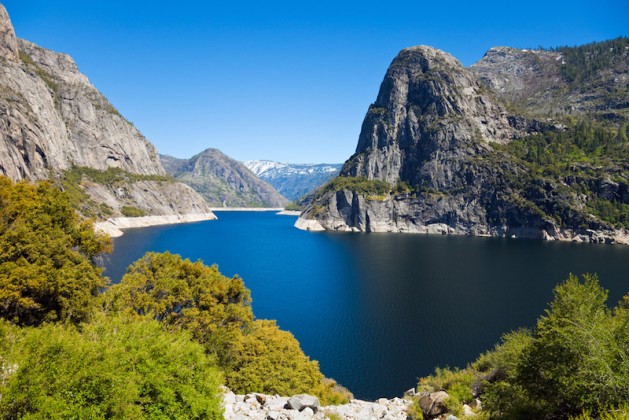
Six great national parks to visit in spring
The most popular natural wonders in North America are bustling with visitors from all around the globe come summertime, but the beauty of nature isn’t limited to only one season. Though they might not enjoy the same pristine weather they do in July and August, many of America’s most stunning national parks are equally worth visiting earlier in the year. If you’re looking to appreciate the rebirth of nature and the brisk-but-warming temperature brought by the spring, here are six national parks worth visiting this spring. Be sure you don’t miss this year’s National Park Week from April 16th to 24th, when every federally-managed park will be offering free admission.
Yosemite National Park
Easily one of the most famous and well-traveled national parks in the US, it goes without saying that Yosemite is beautiful year-round, whether visitors must suffer the bitter cold and frozen landscapes of winter or the oppressive heat and crowds of summertime. Between those two seasons, the frozen peaks thaw and the waterfalls and streams throughout Yosemite gush with life. The meadows are covered with lush greens and the pastels of recently-bloomed wildflowers, and the extra-full ponds like Mirror Lake perfectly reflect Yosemite’s rock formations like the iconic Half Dome. It’s worth the early visit to beat the rush and the heat by travelling before summertime comes around.
Great Smoky Mountains National Park
As America’s most-frequented national park, the Great Smoky Mountains enjoy more than ten million annual visitors, meaning there’s little chance of escaping the crowds here. Nonetheless, spring is an ideal time to visit as the smoke recedes as the weather warms, offering views of the rolling, colorful hills with stunning clarity. The park is also nicknamed “Wildflower National Park” for the stunning array of vibrant flowers that come into bloom from March through June. Whether you’re simply driving through, taking a long hike or looking for world-class trout fishing, this is the time to do it.
Kenai Fjords National Park
Alaska is a little out of the way for most road-trippers looking to explore the protected lands of the United States, but it’s worth suffering through a long flight and some cold weather to reach Kenai Fjords National Park, on the edge of the Kenai peninsula roughly two hours removed from Anchorage. When springtime comes, visitors can catch a glimpse of the magnificent marine life in the region, as gray whales return to the area to feed, flocks of exotic birds enjoy the rocky coasts and timid black bears emerge from hibernation so tourists might catch a rare glimpse of the reclusive creatures. Most come to Alaska in summer for the long days, but spring in Kenai offers unparalleled wildlife and lonely, spectacular views of rugged ice fields instead.
Zion National Park
The towering cliffs and monoliths that characterize the otherworldly valley of Zion National Park look especially astounding during Spring, when the mild post-winter weather allows the greenery to flourish, creating a beautiful contrast between orange rock and deep green plant life. The snowmelt brings bigger streams and waterfalls, making for fantastic views and cold-but-unforgettable canyoneering through trails like The Narrows. Most importantly of all, however, the ideal springtime temperatures mean that treacherous uphill hikes like Angel’s Landing are much more manageable than in the scorching summers.
Saguaro National Park
Located within easy driving distance of Tuscon, Arizona’s oft-overlooked national park is named for the uniquely large saguaro cactus that most of us think of when we imagine the southwest. These amazing, iconic cacti come to astounding life during the spring months, along with the harsh landscape of the southern Arizona desert. This is the perfect time to witness vibrant flowers bursting from the spikey cacti and other desert plants alongside fields of blooming gold poppies, marigolds and red penstemons.
Glacier National Park
Northern Montana is far from warm during the spring, when temperatures commonly still dip below 40 or even 30 degrees Fahrenheit. Colder weather means fewer people, however, and you’d be hard-pressed to find a more solitary sort of national beauty than at Glacier National Park in the spring. With less visitors to scare them off or snowfall to drive them into hibernation, the park’s unparalleled wildlife is out in full-force. You’re likely to see everything from moose and elk to sheep and buffalo moving through thick forest landscapes or congregating near the impossibly still mountain streams and lakes. This is the untamed mountainous frontier you imagine when you think of pioneer days, still alive today.



